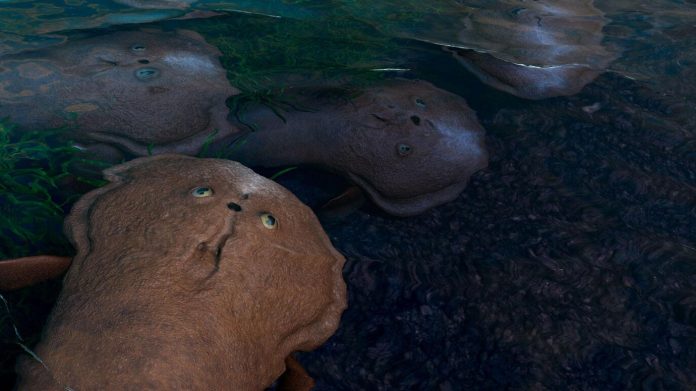
life.
Researchers have reconstructed the brain, heart, and fins of Norselaspis glacialis, a jawless fish that lived over 400 million years ago, revealing that speed and sharp senses evolved long before jaws and teeth appeared.
The discovery, published in Nature, was led by scientists from the Canadian Museum of Nature and the University of Chicago.
It offers a rare glimpse into how important traits emerged before one of evolution’s biggest leaps — the rise of jawed vertebrates, a group that would eventually give rise to all animals with backbones, including humans.
Fish have been around for half a billion years. Early species lived slowly on the seafloor, but by 400 million years ago, jawed fishes dominated open waters.
The traditional view has been that jaws evolved first, followed by other adaptations for active hunting. But Norselaspis turns that idea upside down.
“This fossil shows that advanced senses and a powerful heart came before jaws and teeth,” said lead author Tetsuto Miyashita. “It’s like finding the warm-up act before the main evolutionary performance.”
The fossil was found in a sandstone block collected during a 1969 expedition to Norway’s Arctic islands. Decades later, researchers split the rock to reveal a perfectly preserved half-inch-long skull.
Using high-energy X-ray scans at the Paul Scherrer Institute in Switzerland, they were able to create an incredibly detailed 3D map of the fish’s anatomy — including impressions of its heart, blood vessels, brain, nerves, and even tiny eye muscles.
The scans revealed seven muscles controlling the eyes (humans have six), unusually large inner ears, and a big heart with major blood vessels arranged for high-speed circulation.
If scaled to human size, its inner ears would be the size of avocados and its heart the size of a cantaloupe. Behind its gills, paddle-like fins were angled for sudden stops and sharp turns, making Norselaspis a swift and agile swimmer among otherwise sluggish jawless fishes.
These traits likely evolved to escape predators. Later, when jaws appeared, they combined with these sensory and swimming upgrades to create efficient hunters, leading to the burst of diversity seen in the Devonian Period.
The fossil also challenges long-held ideas about the origin of shoulders and limbs. The nerves in Norselaspis show that shoulders did not evolve from gill structures but emerged as a separate innovation, with the neck later evolving in jawed vertebrates to separate head from torso.
Miyashita likens the evolution of jaws to a famous historical spark — like the event that triggered World War I — but says context is everything.
“With Norselaspis, we can see the world before that big moment, and it all comes down to what’s in the heart.”
Source: KSR.



